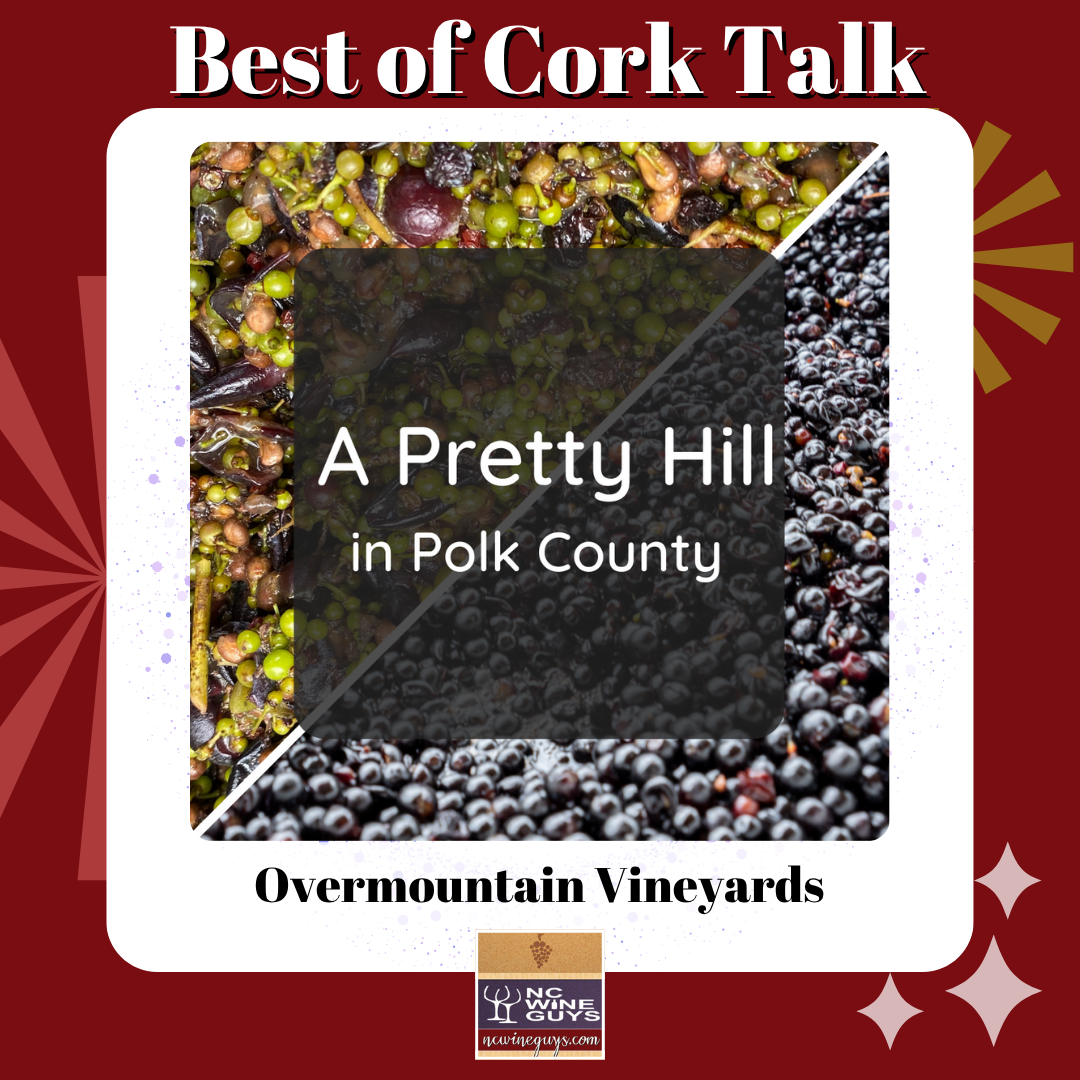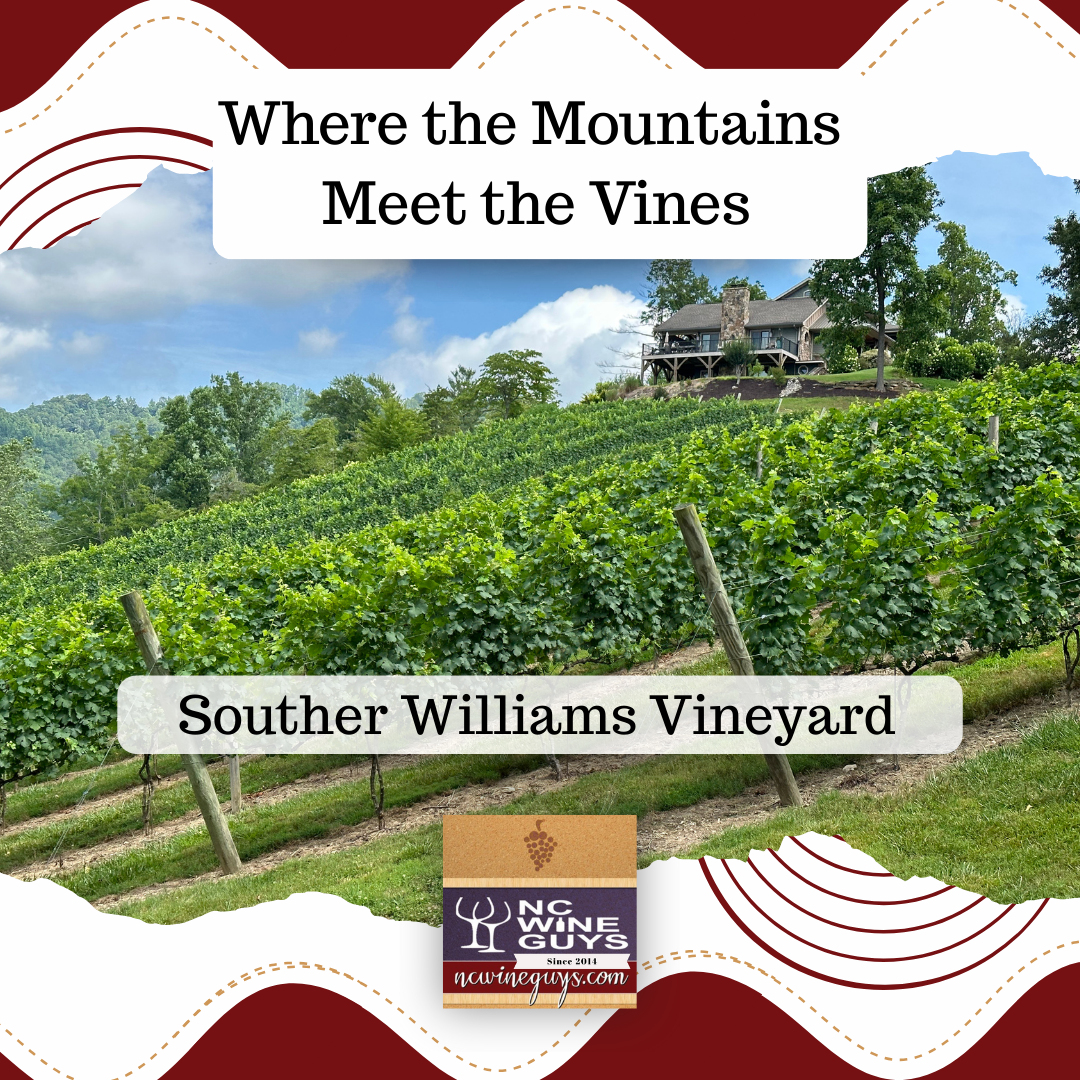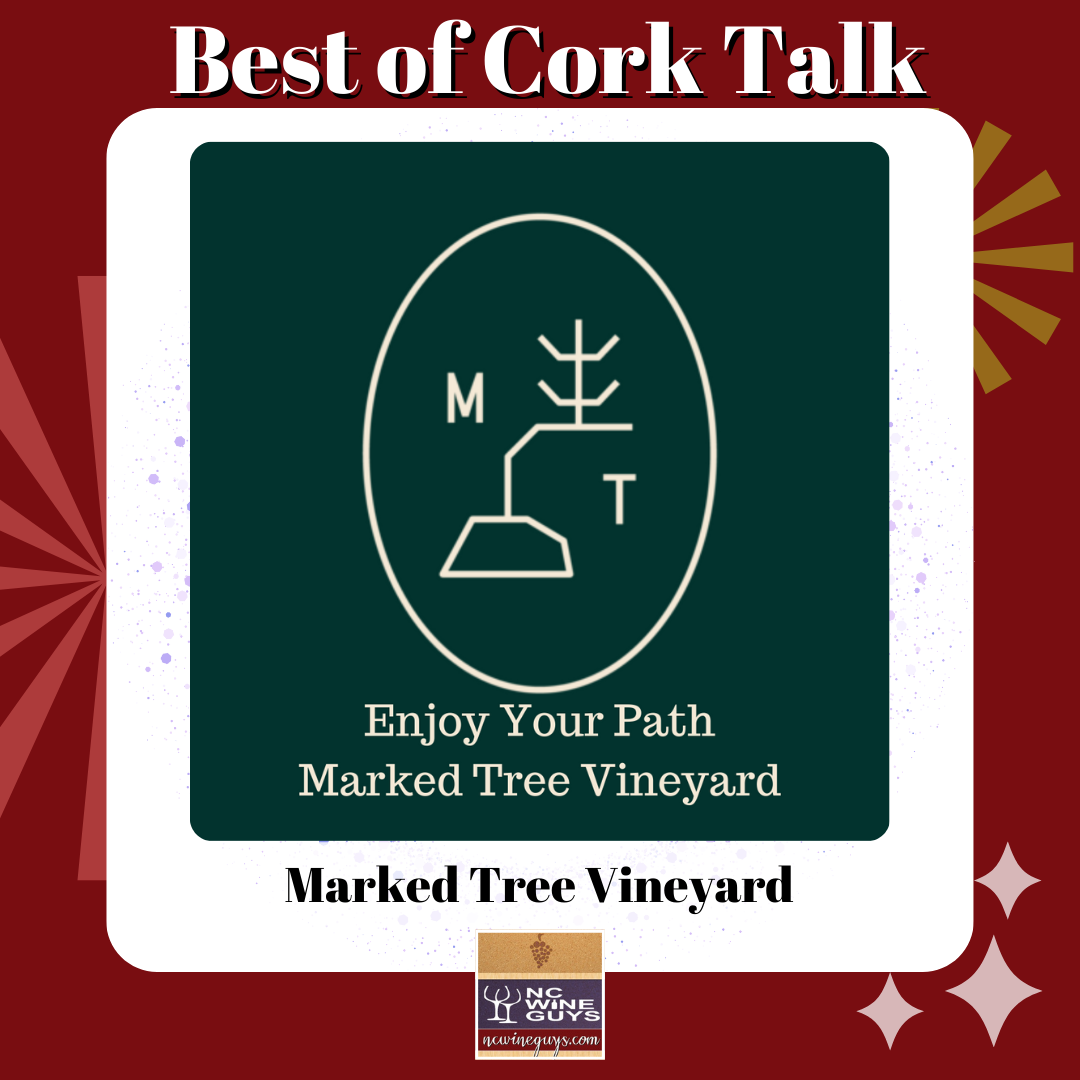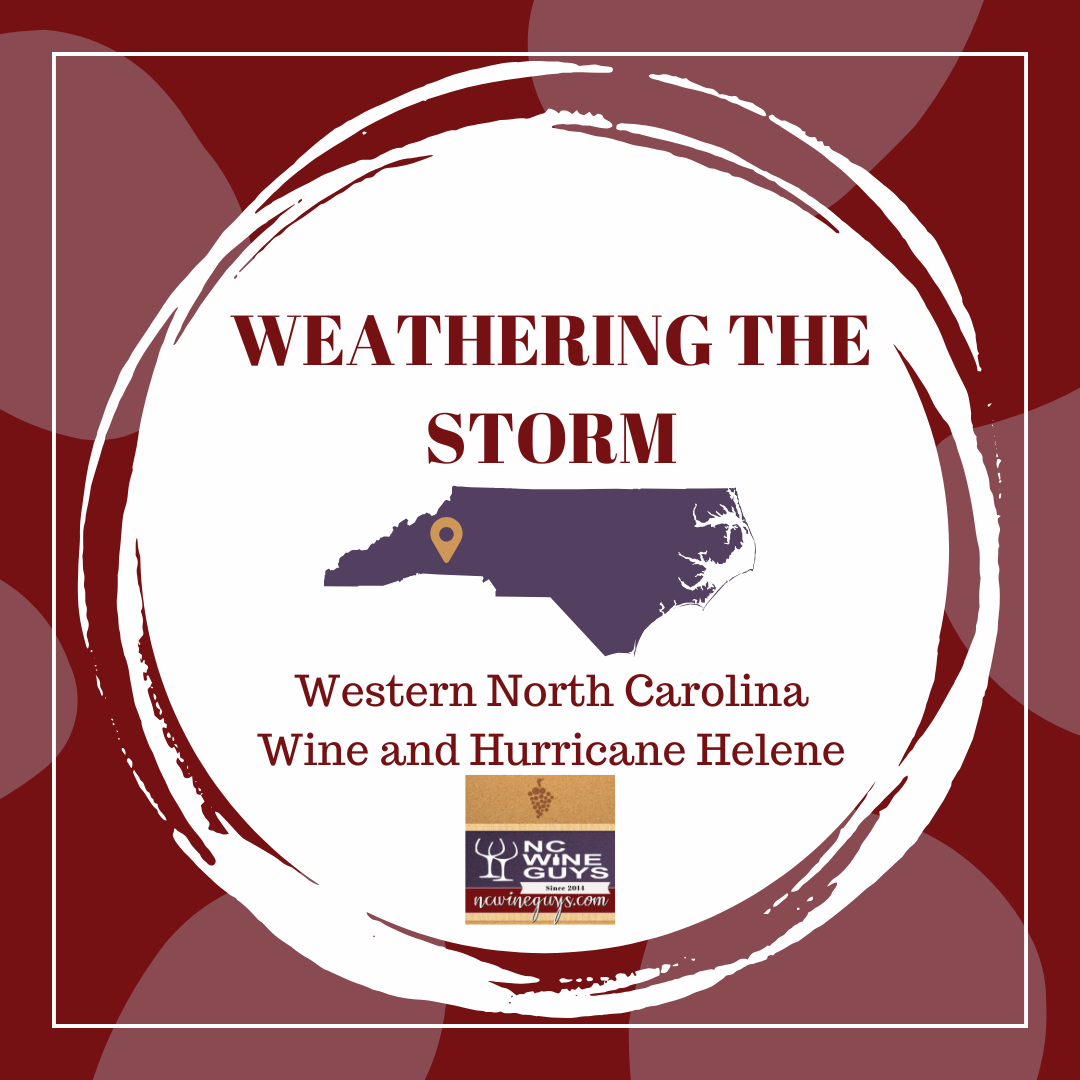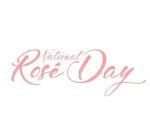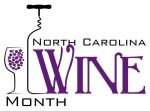Whenever you have an opportunity to sign up for a vintage wine tasting, you should really consider it. Oftentimes when you read about vintage tastings in wine literature, they span decades usually marked by significant events in the history of the sponsoring winery. Here in North Carolina, most of the wineries haven’t been open for decades like you might find in California. One of the only wineries that comes close to this is Hanover Park, which is where our most recent vintage tasting took place.
Nearly 20 years ago, Michael and Amy Helton purchased the farm that would become Hanover Park Vineyards. Their honeymoon in France was the driving force behind their decision. Soon after, they planted grapes and after a few years of careful farming, they produced their first wines. For every vintage they produced, Michael set aside a few cases of wine so they could enjoy them in they years to come. Every so often, they open their personal library to sample some of the older vintages and share the wines with their friends, family, and loyal customers.
The tastings are normally center around two different wines that reach as far back as 1999. Their most recent tasting offered Chambourcin and their own red blend that they call Michael’s Blend. About 20 people signed up to sample the wines and test their fortitude. Amy selected eleven wines, five each (plus an extra last-minute adding one of the ’99 Chambourcin). Along with the wines, Amy prepared three courses for us to enjoy. With the Chambourcin we enjoyed a barbecue pulled pork with a spicy slaw and a chicken cacciatore. To pair with the Michael’s Blend, Amy prepared a burger with potato salad, Kosher salami and Asiago cheese. Each of the dishes paired well with the wines and added a layer of complexity that made the evening all the better.
Many thanks to Michael and Amy for throwing such a great event and sharing their passion with us. Also, thanks to Emily and Paige for helping with the food and for keeping our glasses full. Cheers to you all! Our notes are below.
1999 Chambourcin: This surprise offering is made from their very first harvest which only produced one barrel of wine. In the glass this wine was still brick-red and held its color to the very edge. On the nose, this wine showed warm acidic notes, almost tomato like. The flavor was bright up front and faded quickly into a nice spicy mid-palate. The finish was slightly chalky, but very pleasant. This wine is holding up very nicely.
2001 Chambourcin: This wine was noticeably lighter in color and wasn’t as vibrant on the nose with a slight damp wood note. It wasn’t a sign of cork taint, as it was more of a green woodsy scent. The wine itself was more acidic upfront and then it pulled in on itself, becoming very subtle and almost withdrawn.
2002 Chambourcin: The ’02 was simply fantastic. It had a great dark color with a full nose that showed slight hints of smoke and vanilla. It was smooth with a silky texture and had wonderful balance. To quote Michael, “The ’02 is alive and well!”
2005 Chambourcin: This vintage had the darkest color of all the wines we sampled. The nose was slightly wet, but not offensive. The flavor of the wine was full, well-rounded, and velvety. The mid-palate was full of chocolate notes that played into its lingering finish. The silky smoothness that you first notice up front is present in the long, drawn out finale. This was one of our favorites.
2006 Chambourcin: The color here was much lighter, almost tawny in appearance. The nose was traditional and slightly muted. The standard flavors were also present, showing cherry and dark fruit notes. The food went well with this wine and helped to bring out more of the subtle characteristics.
2008 Chambourcin: This wine had a dark color, but not as dark as the ’02. The nose was laced with spice notes and was pleasing. The wine is full-bodied, but it is clear that this wine could hold for a while longer. The dry cherry notes and slight tannic finish make this wine well-rounded and a great transition into the Michael’s Blend.
2001 Michael’s Blend: This one had the darkest of the colors in the Michael’s blend family. The nose was fantastic and very very fragrant, reminiscent of port and chocolate. There were also hints of dried plums and figs. This wine was soft, delicate, and well-rounded but not quite as soft as the nose would imply. There were very good notes of cherry and dark red current and the wine showed good structure throughout.
2002 Michael’s Blend: The color this wine was vibrant and even throughout from center to the edge. The nose was even and very pleasant. The wine was robust the refined a little dark and very subtle. In our opinion it was good, just not as good as the ’01, however many people at the tasting preferred it to the ’01. This wine was not quite as full-bodied as most of the other ones we had throughout the evening.
2003 Michael’s Blend: The color on this wine was a little dull, but was still fairly good considering the age. We learned that 2003 was actually a very poor vintage for most wineries as there was a large hail storm that year, right before harvest. The wine really was just okay, but it wasn’t bad by any means. They were notes of earthy bitterness and a nice smooth spice on the very end. Up front showed some bright acids and a light tartness that could be attributed to the harsh weather.
2004 Michael’s Blend: This one was not too dark at all, possibly the lightest in color of all the wines we had that evening. The nose was good and exhibited some hints of chocolate. The wine was very drinkable itself, easy and pleasing with a nice woody and tannic finish.
2008 Michael’s Blend: This wine was light in color, however it does seem as though it may darken with more age. The nose was nice with spices and a subtle cherry undertone. The spicy mid-palate was very delightful and faded into a nice crisp and clean finish. While this wine might not have reach its full potential, there’s no harm in drinking it now.






